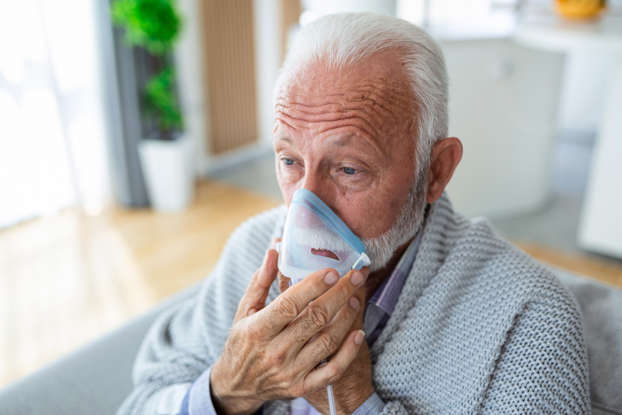The Rise Of Deadly Fungi: A Looming Superbug Crisis

Table of Contents
The Growing Threat of Fungal Drug Resistance
The development of antifungal drug resistance is a complex process, often involving mutations that alter the target site of the drug, or mechanisms that pump the drug out of the fungal cell. This resistance isn't merely an inconvenience; it renders existing treatments ineffective, leading to prolonged illness, increased hospitalization, and higher mortality rates.
Several factors fuel the rise of resistant fungi:
- Overuse of antifungals: The widespread use of antifungal drugs in agriculture (to prevent crop diseases) and human medicine contributes significantly to the selection and spread of resistant strains.
- Prolonged hospital stays: Hospitals can act as reservoirs for resistant fungi, facilitating their transmission between patients with weakened immune systems.
- Immunocompromised patients: Individuals with compromised immune systems (due to HIV/AIDS, cancer treatments, organ transplantation, or other conditions) are particularly vulnerable to severe fungal infections, and these infections are more likely to involve drug-resistant strains.
Examples of fungi developing resistance include:
- Candida albicans developing resistance to azoles and echinocandins.
- Aspergillus fumigatus exhibiting resistance to triazoles.
- Cryptococcus neoformans showing resistance to flucytosine.
A recent study indicated a staggering 30% increase in antifungal-resistant infections globally over the past decade, highlighting the urgency of the situation.
Vulnerable Populations at Risk from Deadly Fungi
Individuals with weakened immune systems are disproportionately affected by deadly fungi. These vulnerable populations face a higher risk of severe, life-threatening infections due to their inability to effectively fight off fungal invaders.
High-risk groups include:
- Patients undergoing chemotherapy or radiation therapy for cancer.
- Individuals with HIV/AIDS.
- Recipients of organ transplants.
- People with diabetes.
- Those receiving long-term corticosteroid therapy.
These populations are at significantly higher risk due to:
- Impaired immune response: Their weakened immune systems cannot effectively control fungal growth.
- Increased susceptibility to invasive infections: Fungi can spread to vital organs, leading to severe complications.
- Delayed diagnosis: The symptoms of fungal infections can mimic other conditions, leading to delayed or incorrect diagnosis.
- Limited treatment options: The availability of effective antifungal therapies is limited, especially for drug-resistant strains.
The Impact of Climate Change on the Spread of Deadly Fungi
Climate change is creating a more favorable environment for fungal growth and spread. Rising temperatures, increased humidity, and changes in rainfall patterns are expanding the geographic range of many fungal pathogens, and increasing their virulence. This has significant implications for global health security.
- Increased temperatures accelerate fungal growth and reproduction rates.
- Higher humidity provides optimal conditions for fungal spore dispersal and germination.
- Extreme weather events can disrupt ecosystems, creating new opportunities for fungal pathogens to thrive.
Examples of fungi whose prevalence is increasing due to climate change include:
- Coccidioides species, causing coccidioidomycosis (Valley Fever).
- Histoplasma capsulatum, causing histoplasmosis.
- Various species of Aspergillus, causing aspergillosis.
Current Research and Development in Antifungal Treatments
The fight against deadly fungi is far from over. Significant research efforts are underway to develop new antifungal drugs and therapies. These initiatives explore innovative approaches such as:
- Targeting new fungal pathways: Identifying and targeting essential fungal processes that are different from human cells, minimizing side effects.
- Combination therapies: Utilizing multiple drugs to combat resistance and improve efficacy.
- Repurposing existing drugs: Investigating existing drugs that might possess antifungal properties.
- Developing novel drug delivery systems: Improving the effectiveness of antifungal agents by enhancing their penetration into fungal cells.
Promising research projects include investigations into:
- New classes of antifungal compounds.
- Immunotherapies to boost the immune system's response to fungal infections.
- Development of diagnostic tools for rapid and accurate identification of resistant strains.
However, antifungal drug development faces challenges including:
- The complexity of fungal biology.
- The slow growth of fungi, making testing difficult.
- The high cost of drug development and clinical trials.
Preventing the Spread of Deadly Fungi: Public Health Strategies
Preventing the spread of deadly fungi requires a multi-pronged approach focusing on infection control, responsible antifungal use, and robust public health surveillance.
Crucial infection control measures in healthcare settings include:
- Strict hand hygiene protocols.
- Appropriate isolation procedures for patients with suspected or confirmed fungal infections.
- Environmental decontamination to eliminate fungal spores.
- Surveillance and early detection of outbreaks.
Responsible antifungal use involves:
- Avoiding unnecessary use in agriculture and medicine.
- Using antifungal drugs only when necessary and following appropriate dosage guidelines.
- Implementing stewardship programs to ensure responsible use in hospitals.
Public health surveillance plays a vital role by:
- Monitoring the emergence and spread of resistant fungi.
- Identifying high-risk populations and regions.
- Providing timely alerts and public health recommendations.
Addressing the Looming Threat of Deadly Fungi
The rise of deadly fungi represents a serious and escalating global health threat. The development of antifungal drug resistance, coupled with the vulnerability of certain populations and the influence of climate change, necessitates immediate and decisive action. We must prioritize research into novel antifungal therapies, implement rigorous infection control measures, and promote responsible antifungal stewardship. The spread of dangerous fungi demands a coordinated global effort. Support research initiatives, advocate for responsible policies, and educate yourself and others about this growing public health crisis. Ignoring the threat of resistant fungi is not an option; our collective future depends on proactive, global collaboration to combat this looming superbug crisis.

Featured Posts
-
 Bitcoin Price Soars Trumps Crypto Expert Issues Surprise Forecast
May 08, 2025
Bitcoin Price Soars Trumps Crypto Expert Issues Surprise Forecast
May 08, 2025 -
 Lyon Psg Macini Canli Olarak Nereden Izleyebilirsiniz
May 08, 2025
Lyon Psg Macini Canli Olarak Nereden Izleyebilirsiniz
May 08, 2025 -
 Angels Outlast Dodgers Amidst Shortstop Absences
May 08, 2025
Angels Outlast Dodgers Amidst Shortstop Absences
May 08, 2025 -
 Millions In Losses After Widespread Office365 Executive Account Compromise
May 08, 2025
Millions In Losses After Widespread Office365 Executive Account Compromise
May 08, 2025 -
 Hetimi I Uefa S Ndaj Arsenalit Per Ndeshjen Me Psg Cfare Ndodhi
May 08, 2025
Hetimi I Uefa S Ndaj Arsenalit Per Ndeshjen Me Psg Cfare Ndodhi
May 08, 2025
Latest Posts
-
 March 7th Nba Thunder Vs Trail Blazers Game Time Tv And Live Stream Details
May 08, 2025
March 7th Nba Thunder Vs Trail Blazers Game Time Tv And Live Stream Details
May 08, 2025 -
 2025 Release Date Announced For Stephen King Adaptation Directed By Hunger Games Filmmaker
May 08, 2025
2025 Release Date Announced For Stephen King Adaptation Directed By Hunger Games Filmmaker
May 08, 2025 -
 Thunder Pacers Injury Update March 29th Game
May 08, 2025
Thunder Pacers Injury Update March 29th Game
May 08, 2025 -
 Okc Thunder Vs Indiana Pacers Injury Report For March 29th
May 08, 2025
Okc Thunder Vs Indiana Pacers Injury Report For March 29th
May 08, 2025 -
 Thunder Vs Trail Blazers Game Time Tv Schedule And Streaming Options March 7th
May 08, 2025
Thunder Vs Trail Blazers Game Time Tv Schedule And Streaming Options March 7th
May 08, 2025
